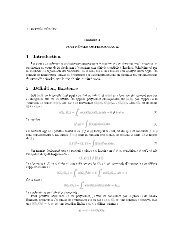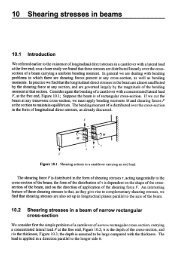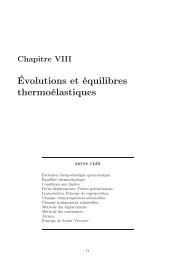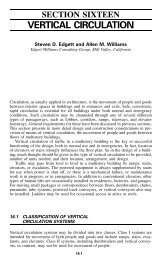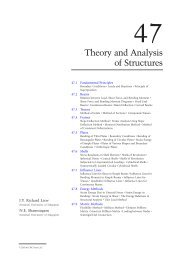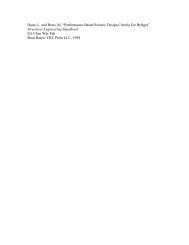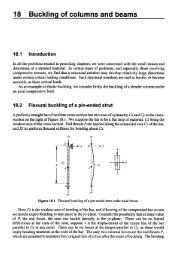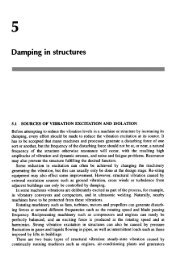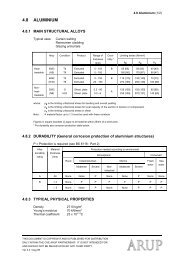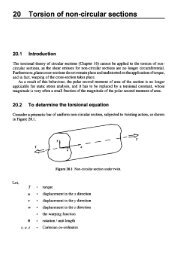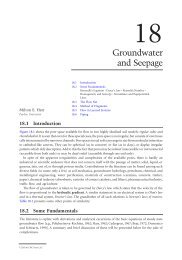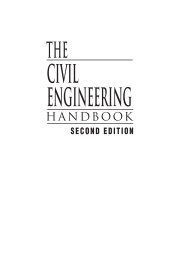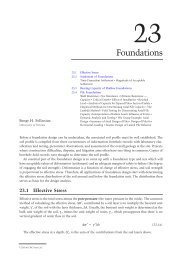Chapter 32 - Deep Foundations - Index of - Free
Chapter 32 - Deep Foundations - Index of - Free
Chapter 32 - Deep Foundations - Index of - Free
- No tags were found...
Create successful ePaper yourself
Turn your PDF publications into a flip-book with our unique Google optimized e-Paper software.
FIGURE <strong>32</strong>.14Block failure model for pile group in clay.The group block method is also <strong>of</strong>ten used to check the bearing capacity <strong>of</strong> a pile group. Thegroup block is treated as a large deep spread footing foundation and the assumed bottom level <strong>of</strong>the footing is different depending on whether the pile is end bearing or frictional. For end-bearingpiles, the capacity <strong>of</strong> the group block is examined by assuming the bottom <strong>of</strong> the footing is at thetip <strong>of</strong> the piles. For frictional piles, the capacity <strong>of</strong> the group pile is checked by assuming that thebottom <strong>of</strong> the footing is located at ⅓ <strong>of</strong> the total embedded length above the tip. The bearingcapacity <strong>of</strong> the underlying weaker layers is then estimated by using methods discussed in <strong>Chapter</strong> 31.The smaller capacity, by using the group efficiency approach, the group block approach, and thegroup block approach with underlying weaker layers, is selected as the capacity <strong>of</strong> the pile group.<strong>32</strong>.6.3 Settlement <strong>of</strong> a Pile GroupThe superimposed stresses from neighboring piles will raise the stress level below the tip <strong>of</strong> a pilesubstantially, whereas the stress level is much smaller for an individual pile. The raised stress levelhas two effects on the settlement <strong>of</strong> a pile group. The magnitude <strong>of</strong> the settlement will be larger fora pile group and the influence zone <strong>of</strong> a pile group will be much greater. The settlement <strong>of</strong> a pilegroup will be much larger in the presence <strong>of</strong> underlying highly compressible layers that would notbe stressed under the loading <strong>of</strong> an individual pile.The group block method is <strong>of</strong>ten used to estimate the settlement <strong>of</strong> a group. The pile group issimplified to an equivalent massive spread footing foundation except that the bottom <strong>of</strong> the footingis much deeper. The plane dimensions <strong>of</strong> the equivalent footing are outlined by the perimeter piles<strong>of</strong> the pile group. The method to calculate settlement <strong>of</strong> spread footings is discussed in <strong>Chapter</strong> 31.The assumed bottom level <strong>of</strong> the footing block is different depending on either end bearing orfrictional piles. For end-bearing piles, the bottom <strong>of</strong> the footing is at the tip <strong>of</strong> the piles. For frictionalpiles, the bottom <strong>of</strong> the footing is located at ⅓ <strong>of</strong> total embedded length above the tip. In manycases, settlement requirement also is an important factor in the design <strong>of</strong> a pile group.Vesic [79] introduced a method to calculate settlement <strong>of</strong> a pile group in sand which is expressed asSg= SsBBgs(<strong>32</strong>.52)whereS g= the settlement <strong>of</strong> a pile groupS s= the settlement <strong>of</strong> an individual pile© 2000 by CRC Press LLC



